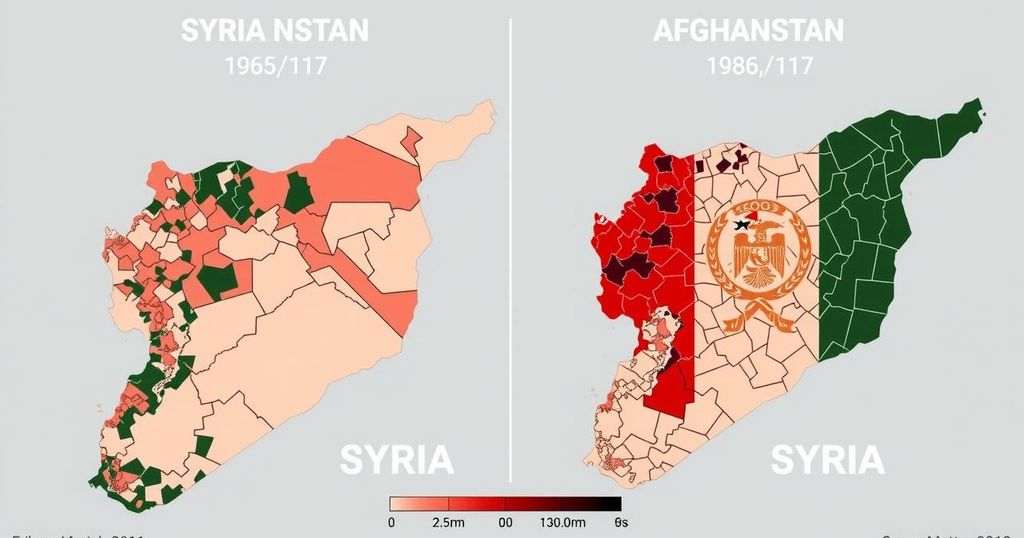Comparative Analysis of Military Equipment Losses: Russia in Syria vs. U.S. in Afghanistan

This article analyzes the military equipment losses incurred by Russia in Syria compared to the U.S. losses in Afghanistan following the collapses of their respective client states. It highlights the substantial military hardware left behind by both powers, emphasizing the greater military implications for Russia in Syria and the limitations of U.S. equipment in Afghanistan.
The recent collapse of the Syrian government bears striking similarities to the fall of the Afghan government three years prior, culminating in significant losses of military hardware for both Russia and the United States. In Syria, the victorious rebels of Hayat Tahrir al-Sham (HTS) purportedly inherited a substantial portion of Assad’s weapons, which were historically comprised of Soviet and Russian-made arms. However, the extent of this inheritance remains uncertain, particularly due to recent Israeli airstrikes targeting Assad’s military assets, including a multitude of aircraft and munitions stockpiles.
The Syrian military apparatus, heavily equipped by the Soviet Union during the Cold War, had faced devastating losses throughout the civil war. Open-source data organizations like Oryx documented the loss of over 3,380 tanks and armored vehicles from 2011 to 2020, adding to the difficulty of estimating how much of Assad’s military arsenal remains intact. Recent Israeli military operations have claimed substantial destruction of military capabilities, further complicating estimates on equipment that may have fallen into rebel hands.
Conversely, the Taliban’s acquisition of U.S. military equipment in Afghanistan has been documented at a staggering $7 billion in value following the U.S. withdrawal. Reports indicate the Taliban obtained thousands of vehicles, aircraft, and munitions left behind, resulting in a surge in their operational capabilities. However, it is crucial to note that while the U.S. abandoned outdated equipment adequate for internal security, the Russian arsenal left in Syria was imbued with the potential for real military effectiveness.
Furthermore, Russia’s current combat losses in Ukraine have exacerbated their need for functioning military equipment, making the loss of assets in Syria more significant. Reports indicate that Russia has sustained severe casualties including thousands of armored vehicles and aircraft, which is compounded by difficulties in producing new weaponry. The potential operational capabilities afforded by the Syrian arsenal stand in stark contrast to the comparatively limited military utility of what the Taliban acquired. Overall, due to the types and amounts of equipment left in Syria, it appears Russia has endured a more substantial loss than the United States in Afghanistan.
The arms relationships of Russia and the U.S. with Syria and Afghanistan respectively relate to the historical context of their military involvements in both nations. Russia’s support for Syria dates back to the Cold War, where Soviet arms supplied significant military hardware to the Assad regime, while the U.S. equipment in Afghanistan was tailored towards internal security. The analysis examines the aftermath of both countries’ engagements and the implications of their respective equipment losses following the collapse of their client states.
In summary, both Russia and the United States faced substantial losses of military equipment following the sudden collapses of the Syrian and Afghan governments. However, the nature of the equipment lost and the ongoing military needs highlight that Russia’s losses in Syria, characterized by advanced military capabilities, could present more dire implications compared to the equipment left behind by the United States in Afghanistan, which was largely adequate for a different operational context. The damages sustained are indicative of broader strategic challenges confronted by both powers today.
Original Source: foreignpolicy.com








